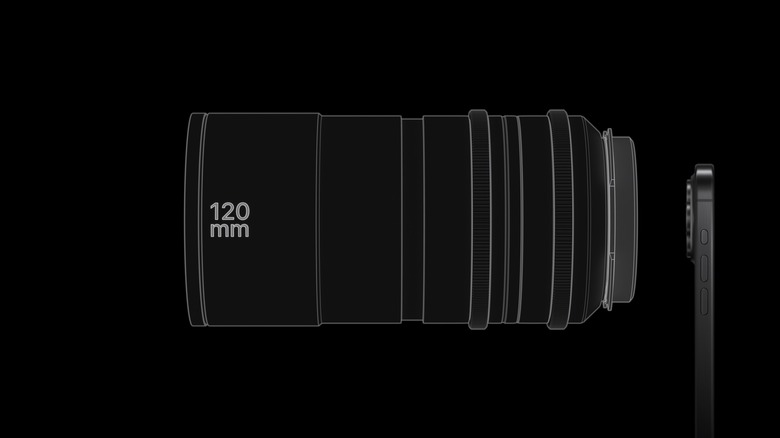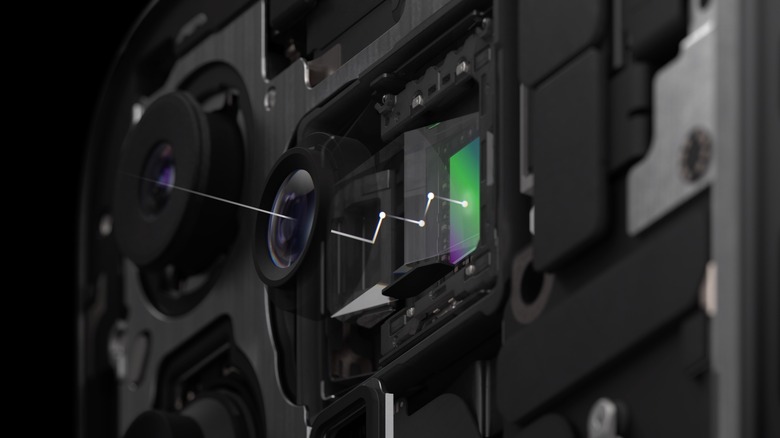How The iPhone 15 Pro Max 5x Telephoto Lens Works
One of the more impressive features showcased during Apple's September 12 event was the new camera that comes in the iPhone 15 model series. In all of the new iPhones, various new computational photography features let you change the focus of a photo after the fact. This means that you can turn a photo into a portrait without having to select "portrait mode" and its specific focus goals before taking the photo, and in general, it lets you change the focus point post-shooting.
It gets better in the iPhone 15 Pro Max, though, which boats a 5x zoom, the biggest zoom ever in an iPhone, using a lens with a 120mm focal length. That last part may have thrown you a little bit as you read it. The iPhone 15 Pro Max is 8.25mm deep, and being a smartphone, it does not have telescopic lenses protruding out of the back of it as a dedicated camera would. So, how is Apple pulling this off?
Meet tetraprism-based periscope lenses
For the iPhone 15 Pro Max camera's zoom lens, Apple uses what's called a tetraprism design. Basically, it's a folded series of mirrors that light bounces off of, which allows the light to take a longer path — in this case, four times longer — through the very limited space inside an iPhone.
"To support the tetraprism design, we pioneered a 3D sensor‑shift optical image stabilization and autofocus module that moves in all three directions," adds Apple's promotional copy. "Our most advanced stabilization system ever delivers twice as many micro-adjustments as before." A subsequent note specifies that the new count is "up to" 10,000 micro-adjustments per second.
This kind of technology is not new to smartphones, though, just new to iPhones. Samsung has a "folded periscope" zoom lens in the Galaxy S23 Ultra, but it's bigger than Apple. How big? A 230mm focal length for a 10x optical zoom. So, if you're looking for a high-end photography-first phone with a sizable optical zoom, it may be best to not let brand loyalty get in the way.

